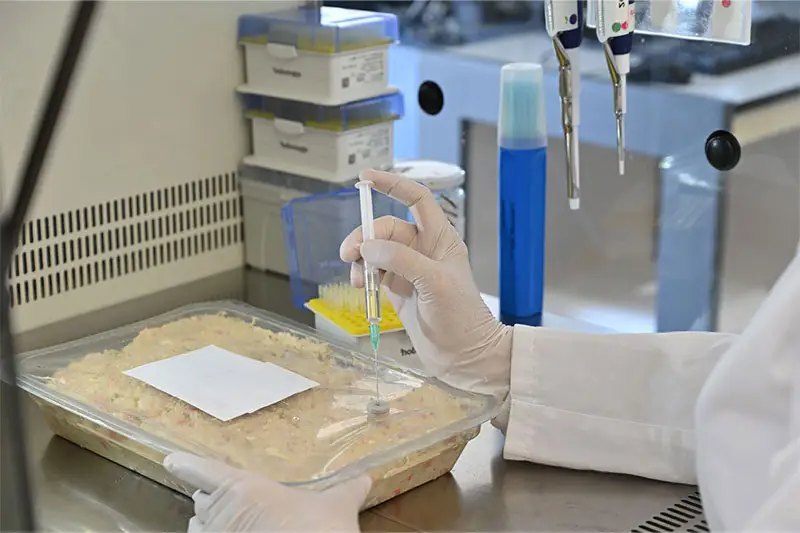Enterobacteriaceae Detection in Cosmetic Formulations
Enterobacteriaceae are a family of Gram-negative bacteria that includes many significant pathogens. In the cosmetic industry, ensuring microbiological safety is paramount to protect consumers from potential health risks associated with contaminated products. The detection and control of Enterobacteriaceae in cosmetic formulations play a crucial role in maintaining product integrity and compliance with international standards such as ISO 22716:2013.
The presence of Enterobacteriaceae can indicate poor hygiene practices during production, packaging, or storage. This contamination is particularly concerning because certain members of this family are known to cause foodborne illnesses and infections in humans. Therefore, rigorous testing methods are essential for ensuring the safety of cosmetic products.
Our laboratory offers specialized microbiological testing services focused on detecting Enterobacteriaceae in various cosmetic formulations including creams, lotions, serums, shampoos, and other personal care items. We adhere to strict protocols that ensure accurate detection and reporting of these microorganisms. Our approach involves a combination of culture-based methods, molecular diagnostics, and advanced analytical techniques.
The testing process begins with thorough sampling and preparation of the cosmetic sample. Specimens are plated onto appropriate media known for their sensitivity towards Enterobacteriaceae growth. Following incubation at optimal conditions, colonies suspected to be Enterobacteriaceae undergo further identification using biochemical tests or mass spectrometry.
For more complex formulations where matrix effects might interfere with standard detection methods, we utilize quantitative PCR (qPCR) assays which offer greater specificity and precision. Additionally, our team employs high-throughput screening technologies to process multiple samples simultaneously, enhancing efficiency without compromising accuracy.
The results of these analyses are reported according to international guidelines ensuring consistency across different laboratories worldwide. Compliance with relevant standards like ISO 22716:2013 guarantees that our findings align with industry best practices and regulatory requirements.
| Method | Description | Advantages |
|---|---|---|
| Culture-Based Methods | Involves plating samples onto selective media and incubation to observe bacterial growth. | Sensitive, visual confirmation of presence/absence. |
| Molecular Diagnostics (qPCR) | Uses polymerase chain reaction technology to amplify specific DNA sequences related to Enterobacteriaceae. | Rapid results, high specificity. |
| Mass Spectrometry | Analyzes samples by ionizing and measuring their mass-to-charge ratio allowing for precise identification of bacteria. | High accuracy, detailed information about the sample composition. |
Benefits
Implementing Enterobacteriaceae detection in cosmetic formulations provides several advantages for manufacturers and distributors:
- Enhanced Consumer Safety: By ensuring product safety, we contribute to the overall well-being of end-users.
- Compliance with Regulatory Standards: Adherence to international standards such as ISO 22716:2013 helps maintain consistent quality across all products.
- Reputation Enhancement: Demonstrating commitment to high-quality production processes can significantly boost brand image and customer trust.
- Risk Management: Early identification of potential issues allows companies to take proactive measures, reducing the likelihood of recalls or lawsuits.
Environmental and Sustainability Contributions
Educating ourselves about and preventing contamination not only protects public health but also supports environmental sustainability. By minimizing waste associated with failed batches due to microbial growth, we help reduce resource consumption and energy usage throughout the production cycle.
Beyond immediate operational improvements, embracing preventive measures fosters a culture of responsibility within organizations, encouraging continuous improvement in manufacturing processes. This holistic approach ensures that every aspect of cosmetic product development aligns with broader sustainability goals.
Use Cases and Application Examples
| Cosmetic Product Type | Description |
|---|---|
| Creams and Lotions | Moisturizing creams, sunscreens, and body lotions. |
| Serums and Toners | Anti-aging serums, toners for acne-prone skin. |
| Hair Care Products | Conditioners, shampoos, hair oils. |





